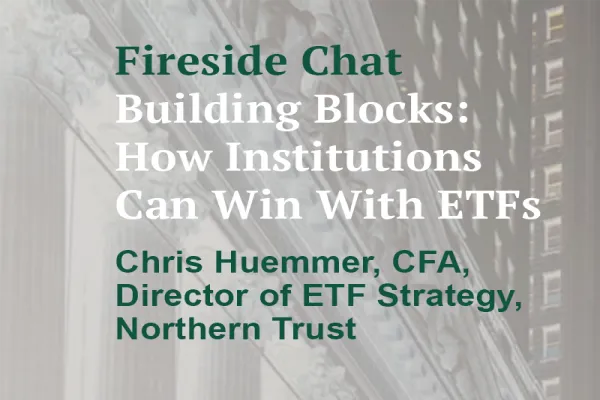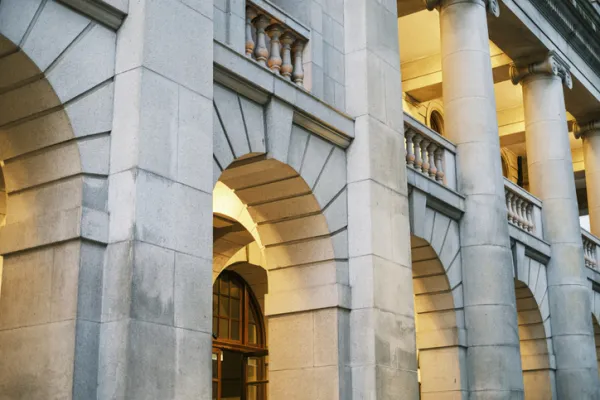Last spring when WestWind Capital Partners, an Atlanta-based real estate investment firm, bid for an 80 percent interest in the Evening Star Building at 1101 Pennsylvania Avenue N.W., it expected to pay a hefty price to fend off rival investors. After all, the 12- story, 218,000-square-foot class-A office property, built in 1898 and once home to the Evening Star newspaper, is just five blocks from the White House. But WestWind, the U.S. affiliate of German investment fund Grund Kapitalanlagegesellschaft (KanAm), wound up paying a whopping $493 per square foot -- a substantial premium over the $314-per-square-foot average price for Washington office space.
The former malarial swamp that is the company town of the U.S. federal government is booming -- discomfitingly so. The District of Columbia's office vacancy rate of 6.4 percent is less than half the average for downtowns nationwide. Office buildings in D.C. now command a higher price per square foot than do those in Manhattan, which average $258.
Prices have soared so high that even those willing to pay them acknowledge that the numbers may have reached their limit. "Overpaying is definitely a concern," says Steve McCarthy, the WestWind principal responsible for KanAm's U.S. acquisitions and asset management. "We try very hard to stay close to replacement cost, which is $400 to $425 per square foot. But there have been exceptions to that."
To be sure, the 61-square-mile Washington market offers multiple attractions to landlords. Restraints on development limit the supply of office space; at about 92 million square feet, the D.C. market is roughly one quarter the size of Manhattan's and three quarters the size of Chicago's. An ultralow vacancy rate makes for high rents: up to $50 a square foot for prime space. What's more, the 311,000-strong Washington federal bureaucracy and its attendant businesses (starting with lobbying firms) represent a reliable and growing source of tenants. But there's also another force at play: a growing contingent of overseas investors that appear all too willing to bid up prices to unheard-of highs.
"Washington, D.C., is one of the most, if not the most, appealing markets in the U.S.," says Stephen Conley, an investment sales specialist and executive managing director in charge of the D.C. office of Holliday Fenoglio Fowler, a Dallas-based brokerage. Adds John Germano, who oversees all business in the metropolitan Washington area for Los Angelesbased investment firm and broker CB Richard Ellis: "D.C. is about as low a risk as you get. And that's why a lot of the international money really likes the city."
Yet a number of industry observers warn that today's lofty prices cannot be sustained, especially with several new office buildings about to come on to the market. As recently as mid-2001, D.C. office space sold for an average of just $225 per square foot, one third below today's average.
"Some of the pricing has gotten to the point where we really don't think it's justifiable," says Mitch Norville, senior vice president and manager of the Washington office of Boston Properties, a leading office real estate investment trust. "The downtown market is going to soften a bit soon. There are a number of properties coming on line this year and next that aren't leased." Rising interest rates mean rising capital costs, of course, and that will put downward pressure on returns. Notes Scott Holmes, manager of acquisitions for American Realty Advisors, a Glendale, Californiabased real estate investment firm: "We've gotten outbid too many times. Competition is fierce. There's nobody who doesn't think that, looking at historical norms, we're in the upper range of pricing."
Nevertheless, foreign investors, both institutional and private, seem to be more eager than ever to own office space in the nation's capital. Washington captured 31.2 percent of all money that foreign investors spent on U.S. office buildings this year through early September, compared with just 3.8 percent in 2002, according to Real Capital Analytics, a New Yorkbased real estate investment research and consulting firm. And foreign investors accounted for more than one third of the office space sold in D.C. in the 12 months through September.
Indeed, although foreign money has long been a presence in major U.S. markets, such as New York and Los Angeles, D.C. has lately emerged as the clear favorite. According to a year-end 2002 survey by the Association of Foreign Investors in Real Estate, D.C. ranked as the single most attractive U.S. real estate market among non-U.S. investors. Afire's 157 members, which at the start of this year owned $70 billion of U.S. property, spent an average of $224 million apiece on North American real estate last year, the vast bulk of that in the U.S. They anticipate upping their spending to an average $308 million each in 2003.
German funds have been especially active investors in Washington real estate. Of the ten most expensive properties that either closed or were under contract through August of this year, five were sold to German investors, and of those five deals, four were among the top five transactions. For example, Blue Capital Investments, the U.S. subsidiary of Hamburg-based Blue Capital, part of HVB Group, paid $114 million, or $407 per square foot, for 280,000-square-foot 2300 N Street N.W., a 99 percentoccupied class-A property in the West End submarket.
To overseas funds, whose investing horizon tends to be more long-term than those of their U.S. counterparts, the D.C. commercial real estate market offers a relatively reliable promise of asset appreciation. In addition, as WestWind's McCarthy notes, "on an apples-to-apples basis, an investment in a first-class Washington office building today generates a pretty respectable return compared to their other, non-real-estate-backed investment alternatives in Germany."
Further fueling German interest is the country's Fourth Financial Market Promotion Act. The year-old law gives open-ended funds greater latitude to buy U.S. properties by authorizing more investment outside the European Union and allowing open-ended real estate funds to invest in more joint ventures and partnerships as a percentage of their investments.
German buyers are so avid to own D.C. real estate that they're accepting modest returns on capital. Says CB Richard Ellis's Germano, "German funds' return threshold is lower than those of some of the domestic pension funds, so they're willing to pay more for properties." Whereas a comparable U.S. investor would look for an 8 to 10 percent return, a German fund will accept 7.5 percent. Notes Boston Properties' Norville: "The guys who are paying the most don't seem to be looking at the asset as much as the cash flow [rental stream minus operating costs] coming out of the asset. It's a different mind-set." Confirms WestWind's McCarthy: "We are extremely focused on cash flow. A target after-tax return to our investors is our No. 1 priority."
In January New Yorkbased investment adviser Real Estate Capital Partners, acting on behalf of high-net-worth German investors, paid a then-record-breaking price -- reportedly $500 per square foot -- for 1399 New York Avenue N.W., in the so-called Golden Triangle bounded by Pennsylvania, New Hampshire and Connecticut Avenues. Known as Executive Tower, the 123,000-square-foot, 11-story trophy property boasts such blue-chip tenants as Deutsche Bank, Microsoft Corp. and BMW Group, which are paying 5 to 15 percent above market rental rates under long-term leases. "It was high. It was definitely a record," says David Israel, vice president of Real Estate Capital Partners' acquisition team in its New York office.
Deal volume continues to surge. More than $1 billion in office sales closed in D.C. during the first six months of this year, up from $892 million in the first six months of 2002, according to Real Capital Analytics. One market watcher predicts total sales of $3 billion by the end of the year. If that prediction bears out, it will mark a big increase over the past two years: $2.14 billion in 2002 and $2.19 billion in 2001.
Of course, for every buyer there is a seller. Boston Properties sold 2300 N Street to Blue Capital not long after signing a long-term lease renewal with a major tenant. But with a significant acquisition in another city to fund and little opportunity to create additional upside at 2300 N following the lease renewal, Boston Properties figured it was a good time to cash in on investors' keen interest in D.C., according to Norville.
Washington's below 7 percent office-vacancy rate is the lowest of any downtown market in the country. At midyear class-A office rents were averaging $35.22 per square foot, and the most sought-after space -- like that in the East End between the White House and the central business district -- was commanding $45 to $50 per square foot. By comparison, top-of-the-line space in Philadelphia or Baltimore was going for $26 a square foot.
There are hints, however, that the D.C. property market may be overheating. Average rents have already slipped slightly from a mid-2001 peak of $39 per square foot. Another troubling sign: A sizable amount of office space -- 6.6 million square feet, or about 7 percent of today's total -- is under construction and will soon flood the market. Only about half is preleased. New buildings being delivered vacant in less-than-ideal class-B locations are not going to help matters any, as they will have to compete vigorously with existing buildings for tenants, potentially driving down rents to lure occupants.
Prime-location structures tend to sign up anchor tenants long before they're completed, or even started, but will also add to available office supply. "The buildings that are going up on the strength of a prelease are generally class-A location buildings," notes John Donovan, a market managing director at Carr- America Realty Corp., a Washington-based REIT that develops and owns office properties around the country. Case in point: Boston Properties' 901 New York Avenue N.W., which got started a year late, in September 2002, but is expected to be completed in fall 2004. The 550,000-square-foot structure already has a lead tenant in law firm Finnegan, Henderson, Farabow, Garrett & Dunner, which is signing on for 250,000 square feet. But about 20 percent of the office space and 50 percent of the retail space at 901 New York was still not preleased as of mid-September.
Many speculative builders are betting that government agencies, especially the Department of Homeland Security, will sign up for new space. "Developers are hoping to throw a building up and have a big user, ideally the government, come by and take it," says CarrAmerica's Donovan. "The General Services Administration [the federal government's landlord] has come to the rescue of a number of projects before."
Washington office prices are not likely to collapse -- steady demand in a constricted market assures that. But prices may soon plateau and perhaps even begin to slip. "We expect to buy more in D.C., but we also expect the market to be increasingly competitive," says WestWind's McCarthy. "We will focus more on other markets moving forward."





